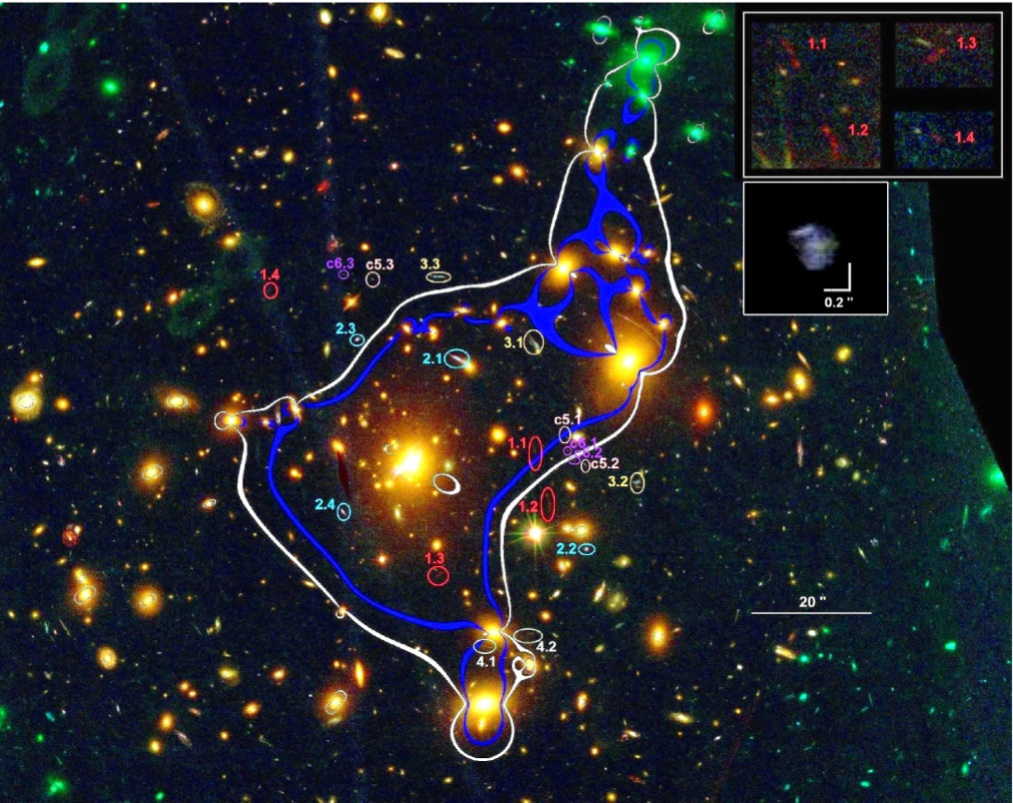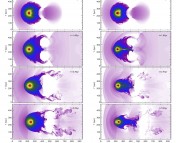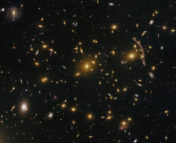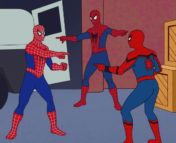Title: CLASH: Discovery of a Bright z~6.2 Dwarf Galaxy Quadruply Lensed by MACS J0329.6-0211
Author: A. Zitrin et al.
First author’s institution: Institut für Theoretische Astrophysik, Universität Heidelberg
Today’s paper is on a topic that long-time astrobites readers might have noticed I keep coming back to: gravitational lensing. Lensing occurs when the mass of a foreground object distorts and magnifies the light from a background galaxy or quasar, sometimes even creating multiple images. It probably isn’t a stretch to say that the neatest thing about lensing is that you can typically see two to four images of the same galaxy. But something else that’s cool is that these distant background objects are magnified, making it possible to study them in detail when otherwise they might not be seen at all: in this way, gravitational lenses act as natural cosmic telescopes.
I’ve talked previously about the galaxies lensing quasars, spectroscopy of lensed galaxies (twice, it turns out) and lensing by compact objects in our galaxy. Another astrobite has explored the lensing signature of planets. Today’s paper deals with the situation where the foreground object is an entire cluster of galaxies. As you can see in the image at the bottom of this post, clusters are rich in lenses. This is because they contain a lot of mass (so the lensing effect is stronger) and cover large regions of the sky (so the probability of a chance alignment with background galaxies is increased). This situation also makes for spectacular pictures.
Zitrin et al. combine cluster lensing with another technique, that of looking for “dropouts.” Neutral hydrogen in the intergalactic medium is very good at absorbing photons with wavelengths shorter than 1216 angstroms, resulting in a pronounced break in the spectra of distant galaxies. Dan discusses this method in more detail in this astrobite. As he explains, this spectral break gets pushed into the optical or infrared (due to cosmological redshift) by the time the light from a distant sources reaches us. Looking for galaxies that are evident in a red filter but disappear when observed in a blue filter is a well-established technique for identifying high-redshift galaxies.
Using the dropout method, the authors find that this galaxy (marked as 1.1 to 1.4 in the image below and shown in the cutout) is at a redshift of 6.18. That isn’t the highest redshift galaxy known, but it is among the most distant of the strongly lensed galaxies. Lensing is important here because it allows the galaxy to be observed in more detail than would be possible without the magnifying power of the cluster: this galaxy is resolved on scales of 200 parsecs (the size of the galaxy itself is about 10 times this).
This cluster (MACS0329) has been observed extensively at multiple wavelengths using the Hubble and Spitzer space telescopes. Since the lensing effect is independent of the color of light, the authors can calculate the flux of this high-redshift galaxy at each wavelength at which it was observed. The authors fit this crude spectrum – called a spectral energy distribution, or SED – and find that this galaxy is low in mass, metallicity and dust but is undergoing significant star formation. The authors also have determined the best-fitting mass profile of the cluster, allowing the morphology of the lensed background galaxies to be reconstructed (recall that lensing distorts the images). The authors find that the z=6.18 galaxy has a non-symmetric morphology with several star-forming lumps, properties that are consistent with similarly-sized galaxies found nearby (as well as with a similar discovery Nathan has previously discussed).

The cluster MACS0329. The elongated galaxies have been magnified and distorted into arcs by the mass of the foreground cluster. The multiple images of one such lensed galaxy are marked by red circles as labels 1.1 to 1.4. This lensed galaxy, shown in more detail the cutout in the top right, is at a redshift 6.18. The contours show something called a critical curve, which is related to the morphology of the lensing system; the white is for the high-z galaxy + cluster lensing system, the blue is for a lower redshift galaxy also lensed by the clsuter. Fig. 1 from the paper.





Trackbacks/Pingbacks